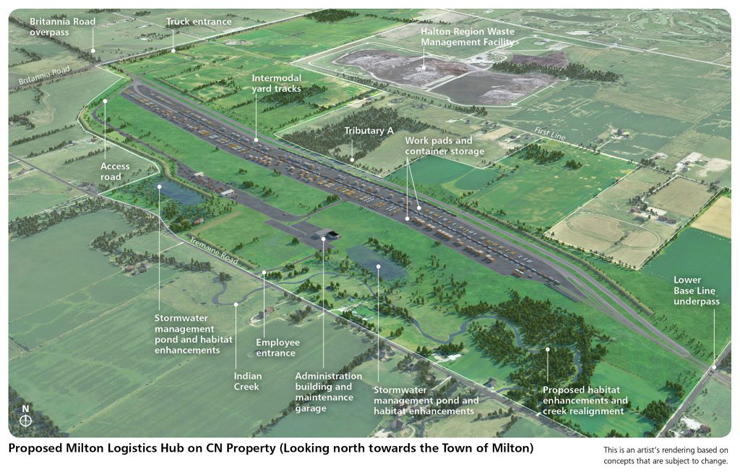OTTAWA, Ontario — Canada’s Federal Court of Appeals has overturned a lower-court ruling blocking Canadian National Railway’s development of a Toronto-area intermodal facility, allowing construction of the terminal to move forward.
The Canadian Press reports that a three-judge panel ruled on Friday that the federal government’s decision to allow construction of the facility in Milton, Ontario, was reasonable despite “significant adverse environmental effects.” That overturned a March decision that found the government had failed to consider the adverse impact of diesel exhaust from locomotives and trucks at the Milton Logistics Hub [see “Court blocks CN plans …,” Trains News Wire, March 5, 2024]. The appeals court had previously stayed the lower-court decision while it considered CN’s appeal, allowing construction to continue [see “Canadian court allows work to continue …,” News Wire, May 13, 2024].
The government had previously approved the CN project after attaching 325 conditions regarding environmental protections, but the Halton Region and its four municipalities challenged that decision, saying the project put the health of residents at risk. The appeals court found that the government had acted after giving due consideration to human health.
Halton Region spokeswoman Lindsay Di Tomasso said the region was considering its legal options and is “deeply concerned” that the project has been approved.
The Milton site is about 25 miles southwest of downtown Toronto. CN has called the facility “a critical piece of infrastructure” because other intermodal terminals in the region are operating at capacity.











